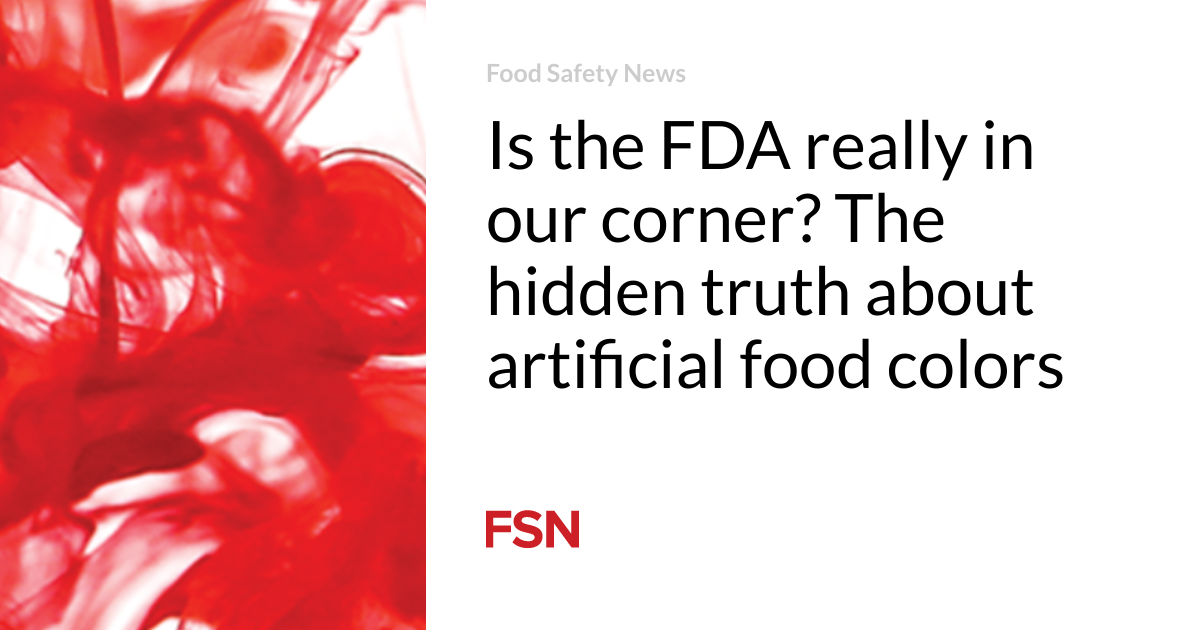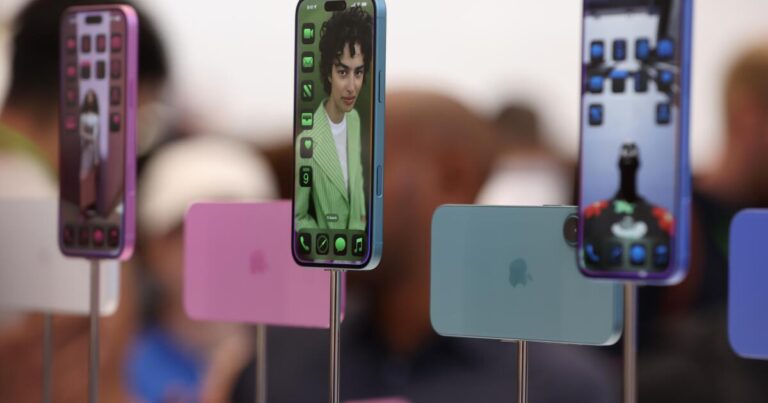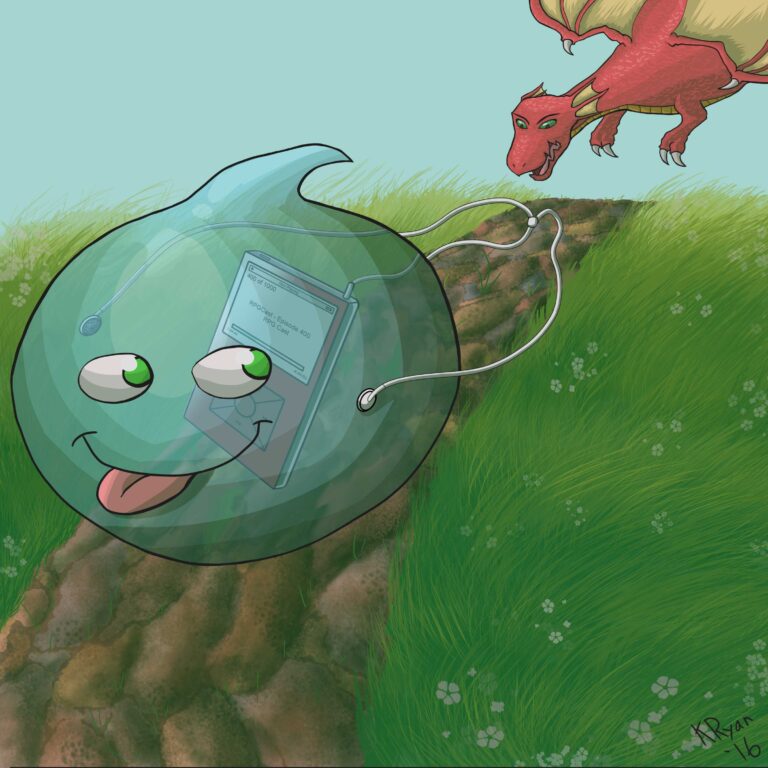— OPINION —
Renee Shutters of Jamestown, NY, noticed adverse effects in her son’s behavior and attention span after he consumed M&M’s made with artificial food colors (AFCs). Beginning a petition on Change.org, Shutters called out food manufacturing corporation Mars, for their use of synthetic food dyes in M&M’s. After sharing her story on multiple news outlets, including The Today Show and The New York Times, Mars was empathetic to the family’s story and claimed they would remove food dyes from M&M’s. Ten years later, M&M’s in the United States continue to include common artificial food colors, Yellow 5, Yellow 6 & Red 40, in their ingredient list.
Shutters is not the only one to fight for food dye safety. Many others have pressured the FDA to make a change in their approval process of food coloring. Rightfully so, many nations such as Norway, Finland and Switzerland, have completely banned certain AFCs, and the EU even warns the public about the potential adverse effects of AFCs on product labels. In the US, AFCs were approved by the FDA between 1969 and 1987, but the agency has yet to change this legislation, even after decades of studies.
The debate surrounding AFCs has been going on for years, as studies have highlighted their effects on children. Most notably, a 2007 study done by Southampton University linked AFCs to hyperactivity, which includes inattention, increased movement and impulsivity. Additionally, Yellow 5, Yellow 6, and Red 40, were found to contain benzidine, a manufactured chemical known to increase risk of cancer. Another study even linked AFCs to DNA damage.
In 2008, The Center for Science in the Public Interest, a consumer advocacy organization, filed a petition for the FDA to ban the use of synthetic dyes. The CSPI knew this would not happen overnight, so they suggested an interim policy for the FDA to require warning labels on such products. However, no changes were made as the FDA’s food advisory committee voted 13-1 for more research on the subject and 8-6 against the addition of warning labels. Simultaneously, in 2008 the European Union announced their plan to add warning labels to all food products that contain artificial food coloring. In 2010, warning labels reading “May have an adverse effect on activity and attention in children” were successfully implemented.
Almost 15 years later, Americans continue to consume AFCs in over 350 products, all easily accessible across the country. In contrast, Europeans are enjoying the same products, with better ingredients. Possibly in an attempt to avoid the requirement of warning labels, some companies have actually changed their ingredients in the EU. The food blogger, Food Babe, compares ingredients used in the US vs the EU. For example, Mountain Dew in the US gets its bright yellow color from the AFC Yellow 5, but in the EU it gets its same color from beta carotene, the pigment often found in carrots. How is this fair?
Most recently, California’s Office of Environmental Health Hazard Assessment (OEHHA) conducted an evaluation of food dyes in 2021 and found evidence of neurobehavioral problems. This ultimately led California Governor Gavin Newsom to sign a new bill into law, just this past year, aiming to protect consumers from food additives.
In my opinion, I don’t think anyone would be in support of the use of AFCs, except for maybe the food companies themselves. AFCs are cheaper, last longer, and give products their bright colors, some of which are not possible using more natural ingredients. For the creators of products like Skittles, Doritos, Fruit Loops, Jello, and many, many more, AFCs are a way to make these treats delicious and appealing to children. However, as parents, it’s important to look at the data and limit these products from your children for their own health and safety. There’s an abundance of nutrient dense foods to fuel your children, then some snacks filled with carcinogens! If the FDA won’t do its job of more strictly regulating ingredients, then it’s up to us to do it for them.
In reality, the US is far behind other countries in terms of food safety. The FDA acknowledges AFCs may have an effect on some children, but says it is still conducting research. Two out of every three Americans are either overweight or obese (69%), in comparison to only half of our European neighbors. Due to the highly processed diets more Americans consume, AFCs could potentially be adding to the chronic health problems in our country. It is vital to continue pressuring the FDA to stick to its mission of protecting public health and following science-based information surrounding ingredients. If you want to know how you can help ignite change in food additive legislation, support organizations that fight for this issue such as The Center for Science in the Public Interest, or send complaints about ingredients directly to the FDA or by contacting a complaint coordinator in your state.
Shutters, Renee. 2013. “Petition · M&M’s Candies: Stop Using Artificial Dyes Linked To Hyperactivity – United States · Change.org.” Change.org. https://www.change.org/p/m-m-s-candies-stop-using-artificial-dyes-linked-to-hyperactivity.
Rossen, Jeff, and Robert Powell. 2013. “Concerned mom campaigns against artificial dyes in candy.” The Today Show. https://www.today.com/news/concerned-mom-campaigns-against-artificial-dyes-candy-8C11479395.
Strom, Stephanie. 2013. “Social Media as a Megaphone to Pressure the Food Indsutry.” The New York Times. https://www.nytimes.com/2013/12/31/business/media/social-media-as-a-megaphone-to-push-food-makers-to-change.html.
“Mars fails to fulfill commitment to remove dyes from its American products, CSPI says.” 2021. Center for Science in the Public Interest. https://www.cspinet.org/news/mars-fails-fulfill-commitment-remove-dyes-its-american-products-cspi-says-20210203.
“M&M’S® Milk Chocolate Candies | Mars Foodservices.” n.d. MARS foodservices. Accessed May 8, 2024. https://www.marsfoodservices.com/product/mms-brand-milk-chocolate-candies.
Monahan, Kimberly. n.d. “7 USA Food Additives That Are Banned In Other Countries | Assuaged.” Assuaged-Foundation. Accessed May 8, 2024. https://www.assuaged.com/news/7-usa-food-additives-that-are-banned-in-other-countries.
Curran, Laurel. 2010. “EU Places Warning Labels on Foods Containing Dyes.” Food Safety News. https://www.foodsafetynews.com/2010/07/eu-places-warning-labels-on-foods-containing-dyes/.
“Synthetic food dyes: A rainbow of risks.” 2024. Center for Science in the Public Interest. https://www.cspinet.org/cspi-news/synthetic-food-dyes-rainbow-risks-0.
“Major study indicates a link between hyperactivity in children and certain food additives.” 2007. University of Southampton. https://www.southampton.ac.uk/news/2007/09/hyperactivity-in-children-and-food-additives.page.
“Toxicology of food dyes.” n.d. PubMed. Accessed May 8, 2024. https://pubmed.ncbi.nlm.nih.gov/23026007/.
Zhang, Qi, Alexander A. Chumanevich, and Ivy Nguyen. 2023. “The synthetic food dye, Red 40, causes DNA damage, causes colonic inflammation, and impacts the microbiome in mice.” National Library of Medicine. https://www.ncbi.nlm.nih.gov/pmc/articles/PMC10502305/#:~:text=The%20increase%20in%20the%20use,onset%20colorectal%20cancer%20(EOCRC).
“Petition to Ban the Use of Yellow 5 and Other Food Dyes.” 2008. cspinet.org. https://www.cspinet.org/sites/default/files/attachment/petition-food-dyes.pdf.
Benac, Nancy. n.d. “US panel rejects calls for warning labels on link between food dyes and hyperactivity.” NCBI. Accessed May 8, 2024. https://www.ncbi.nlm.nih.gov/pmc/articles/PMC3114923/.
Meikle, James. 2008. “EU plans warning labels on artificial colours | Food.” The Guardian. https://www.theguardian.com/lifeandstyle/2008/aug/11/foodanddrink.foodsafety.
“EU Places Warning Labels on Foods Containing Dyes;.” July 10, 2010 Food Safety News https://www.foodsafetynews.com/2010/07/eu-places-warning-labels-on-foods-containing-dyes/#google_vignette
“Prevalence of Artificial Food Colors in Grocery Store Products Marketed to Children.” n.d. PubMed. Accessed May 8, 2024. https://pubmed.ncbi.nlm.nih.gov/27270961/.
“Food in America compared to the U.K. (Why is it so different?).” 2019. Food Babe. https://foodbabe.com/food-in-america-compared-to-the-u-k-why-is-it-so-different/.
“Synthetic Food Dyes and Behavioral Effects in Children.” n.d. Center for Science in the Public Interest. Accessed May 8, 2024. https://www.cspinet.org/sites/default/files/2022-03/Dyes_Fact_sheet_California_3.31.2022.pdf.
“California legislators ban carcinogen Red 3 and other additives from foods and beverages sold in the state.” 2023. Center for Science in the Public Interest. https://www.cspinet.org/statement/california-legislators-ban-carcinogen-red-3-and-other-additives-foods-and-beverages-sold.
“Immune reactivity to food coloring.” n.d. PubMed. Accessed May 8, 2024. https://pubmed.ncbi.nlm.nih.gov/25599186/.
“How Safe are Color Additives?” 2023. FDA. https://www.fda.gov/consumers/consumer-updates/how-safe-are-color-additives.
“Adult Obesity | Obesity Prevention Source | Harvard T.H. Chan School of Public Health.” n.d. HSPH.Harvard.edu. Accessed May 8, 2024. https://www.hsph.harvard.edu/obesity-prevention-source/obesity-rates-worldwide/.
“Overweight and obesity in 16 European countries.” n.d. PubMed. Accessed May 8, 2024. https://pubmed.ncbi.nlm.nih.gov/25091048/.
“What We Do.” 2023. FDA. https://www.fda.gov/about-fda/what-we-do.
“Consumer Complaint Coordinators.” 2022. FDA. https://www.fda.gov/safety/report-problem-fda/consumer-complaint-coordinators.
About the author: Gabriella Meringolo is a graduate student at New York University’s Robert. F Wagner Graduate School of Public Service. She is currently pursuing her Master of Public Administration (MPA) in Health Policy and Management, with a specialization in Health Services Management. Meringolo also works full time as a Senior Project Coordinator for NYU Langone Health. As part of the Network Integration Department, she oversees quality performance on the organization’s value-based contracts with Medicare Advantage, Medicaid and Commercial health plans.
(To sign up for a free subscription to Food Safety News,click here)
#FDA #corner #hidden #truth #artificial #food #colors





















+ There are no comments
Add yours